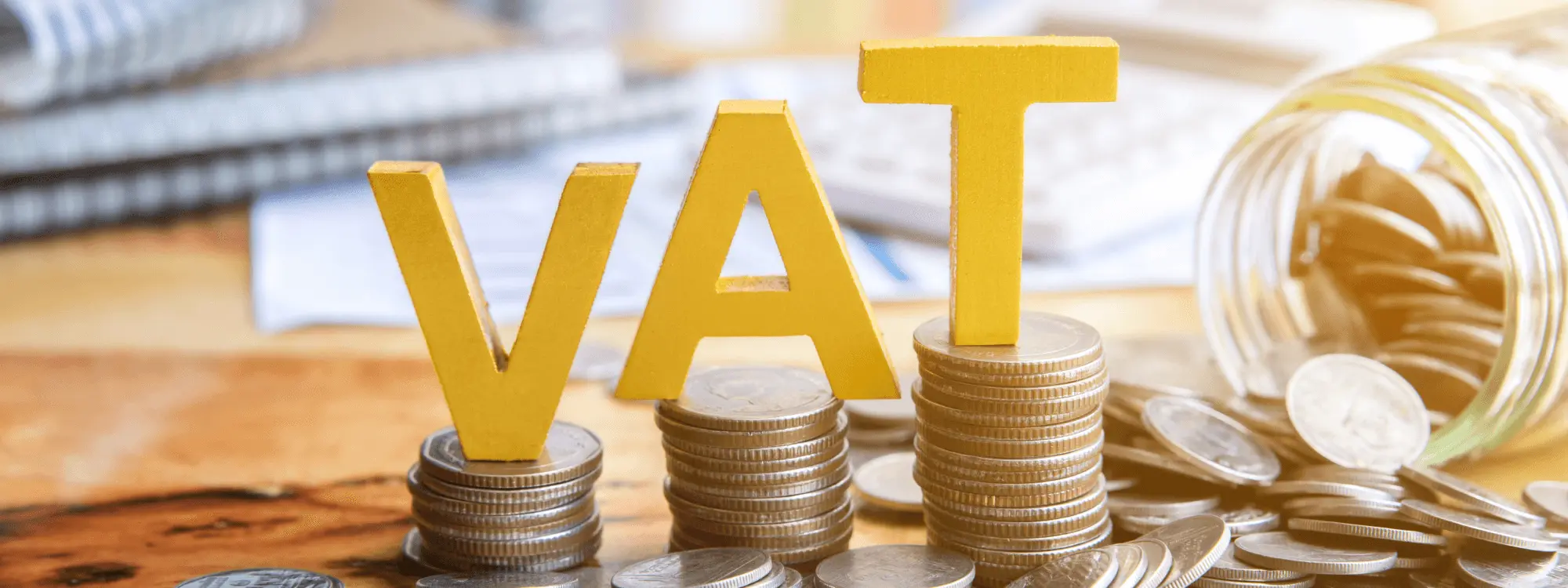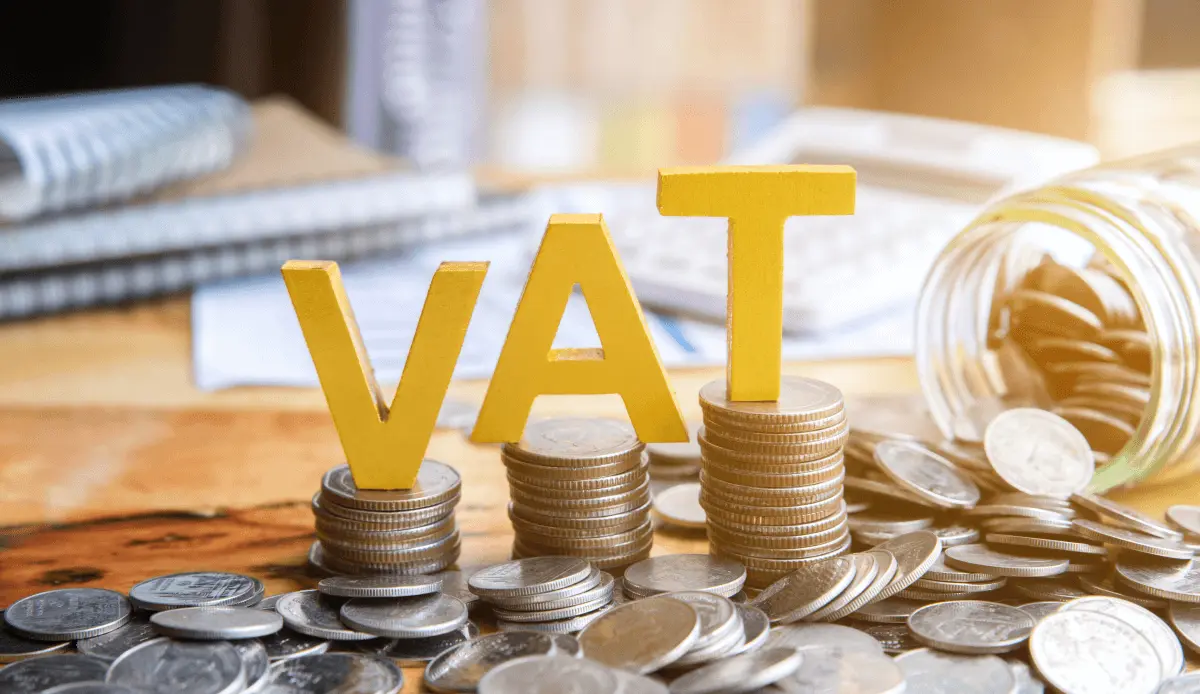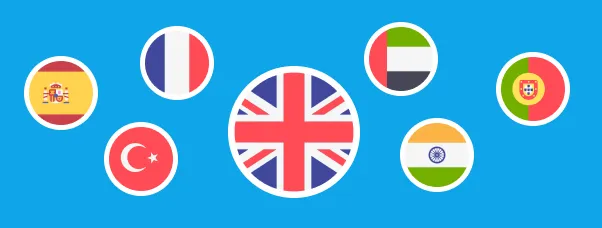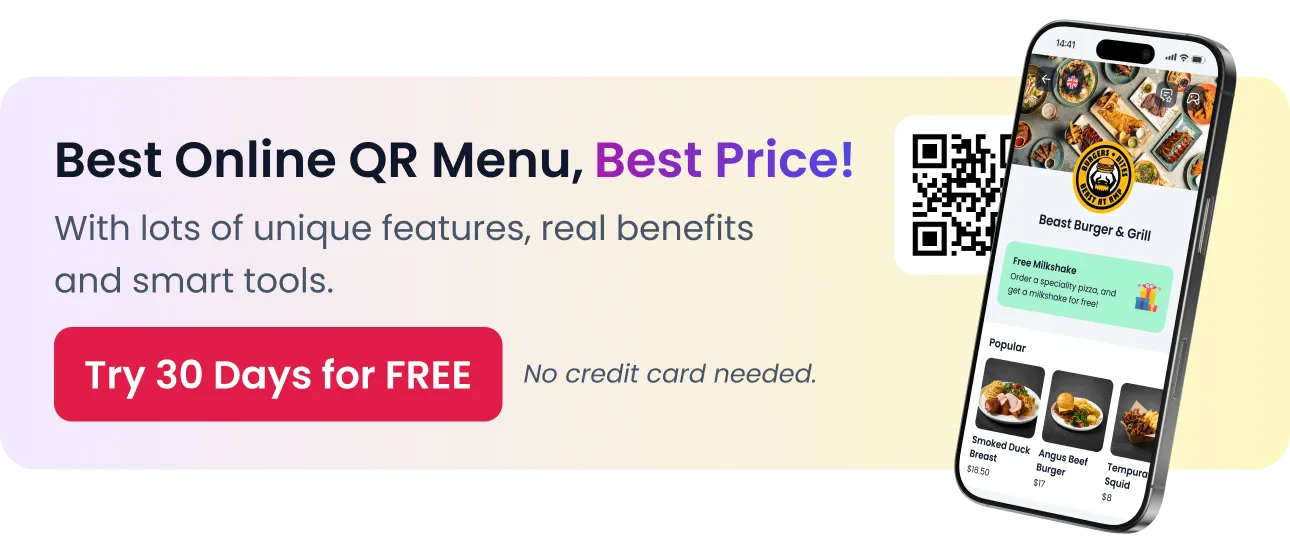

What are The Current VAT Rates for Restaurants in UAE?
Value-added tax (VAT) is a significant consideration for businesses across the UAE, including restaurants, cafes, and bars. Since its implementation in 2018, VAT has had a direct impact on how restaurant owners manage pricing, costs, and compliance. Understanding how VAT works, which rates apply, and how it affects different aspects of the restaurant business is crucial for smooth operations and profitability.
In this guide, we will delve into the specifics of VAT for restaurant owners in the UAE, breaking down everything from current rates to the filing process. Whether you’re just starting out or looking to ensure your restaurant’s compliance, this comprehensive overview will help you navigate VAT regulations effectively. By the end, you’ll have a clear understanding of how to manage VAT in your restaurant to avoid penalties, optimize pricing, and maintain accurate financial records.
Would you like to listen our deep-dive conversation about this article?
Understanding VAT in the UAE for Restaurants
Navigating VAT regulations is essential for restaurant owners in the UAE to ensure compliance and avoid costly mistakes. VAT impacts everything from pricing strategy to filing requirements, and knowing the basics will help you make informed decisions. Below, we break down the key aspects of VAT as it applies to restaurants, cafes, and bars in the UAE.
What is VAT?
VAT, or value-added tax, is a consumption tax applied at each stage of the supply chain, from production to the point of sale. In the UAE, VAT was introduced in 2018 and is charged on most goods and services, including those in the hospitality sector.
- Definition: VAT is a tax levied on the added value at each step of production or service delivery.
- Purpose: The primary goal of VAT is to generate revenue for the government while being passed on to the end consumer.
Is VAT Applicable to Restaurants?
Yes, VAT applies to restaurants, cafes, and bars operating in the UAE, covering a wide range of services and products offered.
- Affected sectors:
- Dine-in and takeaway services
- Catering and event services
- Beverages, including alcohol in licensed establishments
- Examples of VAT application in restaurants:
- VAT is applied to the total bill for dine-in customers.
- Delivery services and catering are also subject to VAT at the standard rate.
By understanding VAT’s scope, restaurant owners can better plan pricing strategies and stay compliant with local regulations.
Current VAT Rates for Restaurants in the UAE
The VAT rate in the UAE is consistent across many sectors, including the restaurant industry. Knowing the applicable rates and how they affect your business is essential for accurate pricing, tax filing, and financial planning. Below, we explore the current VAT rates that restaurants must adhere to and specific considerations for different services.
What is the Standard VAT Rate for Restaurants?
The standard VAT rate in the UAE is 5%, which applies to most goods and services in the restaurant sector. This rate is applied to everything from dine-in meals to delivery services.
- Standard rate of 5% is applied to:
- Restaurant meals, including dine-in and takeaway
- Delivery services
- Catering events and special functions
- Examples:
- A restaurant bill of AED 200 will have an additional AED 10 added as VAT, making the total AED 210.
Are There Reduced VAT Rates for Certain Restaurant Services?
In the UAE, no reduced VAT rates specifically apply to restaurant services. However, some exemptions or special considerations may impact specific scenarios, such as food preparation services or catering in designated free zones.
- Special exemptions or conditions may apply to:
- Certain food items (depending on classification)
- Free zone restaurants under specific conditions
- Cross-border transactions or services
- Key considerations:
- Beverages like alcohol, in licensed establishments, are also taxed at the standard rate of 5%.
- Takeaway and delivery services are taxed at the same rate as dine-in services.
By understanding the VAT rates and their implications, restaurant owners can price their services accordingly and ensure they meet tax obligations efficiently.
VAT on Different Restaurant Services
VAT affects various aspects of a restaurant’s operations, from the food and beverages served to the equipment used in the kitchen. It is crucial for restaurant owners to know how VAT is applied to different services to ensure compliance and avoid financial penalties. Below, we explore the impact of VAT on food, beverages, supplies, and equipment in the UAE restaurant industry.
VAT on Food and Beverages
VAT is applied differently depending on the type of food and beverages served in restaurants. Both dine-in and takeaway services are subject to the standard VAT rate of 5%, but there are a few nuances to consider.
- Standard VAT rate of 5% applies to:
- Dine-in meals
- Takeaway orders
- Delivery services
- Non-alcoholic beverages
- Alcoholic beverages:
- Alcoholic beverages served in licensed establishments are also subject to the standard VAT rate of 5%.
- Any additional taxes or duties on alcohol may apply in specific regions or establishments.
- Exemptions or reduced VAT rates:
- Certain basic food items may be exempt, depending on their classification.
VAT on Restaurant Supplies and Equipment
Restaurants require various supplies and equipment to operate efficiently, from kitchen appliances to furniture. VAT is applied to these goods as well, and it’s important for restaurant owners to factor this into their capital expenditure planning.
- VAT on supplies and equipment:
- Kitchen appliances, furniture, and utensils are taxed at the standard VAT rate of 5%.
- Regular maintenance and repairs are also subject to VAT.
- Importing supplies:
- Imported goods for restaurant use are subject to VAT upon entry into the UAE, unless exempt under specific free zone regulations.
- Understanding how to claim VAT refunds on imports is essential for managing cash flow.
By understanding the VAT application on food, beverages, and restaurant equipment, owners can make more informed financial decisions, ensuring that VAT is correctly accounted for across all areas of the business.
How to Calculate VAT for Your Restaurant Business
Accurately calculating VAT is crucial for setting the right prices and ensuring compliance with tax regulations in the UAE. For restaurant owners, understanding how to factor in VAT to your pricing strategy and financial management is key to maintaining profitability and avoiding penalties. Below, we outline the steps to calculate VAT and common mistakes to avoid.
A Step-by-Step Guide to VAT Calculation
Calculating VAT for your restaurant involves applying the standard 5% rate to taxable goods and services. Here’s how you can do it:
- Identify taxable items:
- Include all taxable sales, such as meals, beverages, and catering services.
- Exclude any exempt or zero-rated items if applicable.
- Determine the total sales amount:
- Calculate the total value of sales (excluding VAT) for each transaction or billing period.
- Apply the 5% VAT rate:
- Multiply the total sales amount by 0.05 to get the VAT amount.
- Add VAT to the customer’s bill:
- Ensure that the VAT amount is clearly shown on the customer’s invoice or receipt.
- Example: If a customer’s bill totals AED 500, the VAT amount would be AED 25 (500 x 0.05), making the final amount AED 525.
- Record VAT for filing:
- Track all VAT collected to report in your VAT return. Keep a record of all transactions and related VAT charges.
Common VAT Calculation Mistakes to Avoid
Restaurant owners often make small errors when calculating VAT, which can lead to compliance issues or loss of profit. Here are common mistakes to watch out for:
- Failing to include VAT in pricing:
- If you don’t factor VAT into your pricing strategy, you may end up losing money by undercharging customers. Always ensure that your prices include VAT.
- Incorrect VAT classification:
- Not all items are taxable at the same rate, and some may be exempt. Make sure you correctly classify each item on your menu to avoid errors.
- Not keeping accurate records:
- Failing to track VAT on every sale can lead to inaccuracies in your VAT returns. Use accounting software to keep records up-to-date.
- Overlooking VAT on promotions:
- When offering discounts or running promotions, don’t forget to calculate VAT based on the reduced price.
By following these steps and avoiding common mistakes, you can ensure that your restaurant complies with VAT regulations while maintaining profitability. Proper VAT calculation also helps in transparent pricing for customers and smoother tax filing processes.
VAT Filing and Compliance for Restaurants
Filing VAT returns accurately and on time is a legal requirement for all VAT-registered businesses in the UAE, including restaurants. Non-compliance can result in fines and other penalties, so it’s essential for restaurant owners to understand the process, key deadlines, and requirements. Below, we cover the essentials of VAT registration, filing returns, and the consequences of non-compliance.
How to Register for VAT in the UAE
Registering for VAT is mandatory for restaurants that meet the required revenue threshold. The process is straightforward, but ensuring you register on time is crucial.
- Who needs to register?
- Any business, including restaurants, with taxable supplies and imports exceeding AED 375,000 annually must register for VAT.
- Restaurants with supplies between AED 187,500 and AED 375,000 can voluntarily register.
- Steps to register for VAT:
- Visit the Federal Tax Authority (FTA) portal.
- Create an account and fill out the registration form.
- Submit required documents, such as trade licenses and financial records.
- Once approved, receive your VAT registration number.
- Important tip: Even if your restaurant doesn’t meet the mandatory threshold, voluntarily registering for VAT may allow you to reclaim VAT on certain business expenses.
How to File VAT Returns in the UAE
VAT-registered businesses must file VAT returns periodically, typically on a quarterly basis. The filing process involves reporting VAT collected from customers and VAT paid on business expenses.
- VAT filing process:
- Log in to the FTA portal using your VAT registration number.
- Submit details of sales (output tax) and purchases (input tax).
- Calculate the difference:
- If output VAT exceeds input VAT, you pay the difference to the FTA.
- If input VAT exceeds output VAT, you can claim a refund or carry it forward.
- Documents required for filing:
- Invoices for sales and services (including VAT)
- Records of purchases and expenses
- VAT returns from previous quarters for reference
- Filing deadlines:
- VAT returns must be filed within 28 days of the end of the VAT period (usually quarterly).
- Late filing or incorrect submissions can result in penalties.
What Happens If You Don’t Comply with VAT Regulations?
Non-compliance with VAT regulations can lead to significant financial penalties and legal consequences. It’s important to stay on top of VAT filings and maintain accurate records.
- Consequences of non-compliance:
- Late submission of VAT returns: Fines starting at AED 1,000 for the first offense, and increasing for subsequent delays.
- Late payment of VAT: 2% of the unpaid tax immediately, increasing by 4% after 7 days, and 1% monthly thereafter.
- Incorrect VAT returns: Additional fines if errors are found during an audit.
- How to avoid penalties:
- Set up reminders for VAT filing deadlines.
- Use accounting software to track VAT on sales and expenses.
- Regularly review VAT submissions for accuracy before filing.
Staying compliant with VAT regulations will help ensure smooth business operations and avoid unnecessary financial and legal complications for your restaurant. Proper planning and record-keeping are essential to ensure that VAT obligations are met efficiently.
Managing VAT During Restaurant Promotions and Discounts
Promotions, discounts, and special offers are effective ways to attract customers to your restaurant, but they can complicate your VAT calculations. It’s essential to understand how VAT applies to reduced pricing, discounts, and special events to avoid under- or over-charging customers and ensure compliance with VAT regulations. Below, we explore the key considerations for managing VAT during promotions and discounts.
How VAT is Applied to Discounted and Promotional Pricing
When offering discounts or running promotions, VAT is calculated based on the final price the customer pays. This means that even if you’re offering a reduced rate, you still need to account for VAT on the actual amount received.
- VAT on discounted prices:
- Apply the 5% VAT rate to the reduced price, not the original price.
- Example: If a meal originally priced at AED 200 is discounted by 20%, the new price is AED 160, and VAT is calculated as AED 160 x 0.05 = AED 8. The customer pays AED 168 in total.
- Promotional offers (e.g., buy-one-get-one-free):
- VAT is still applied to the total value of the promotion.
- Example: In a buy-one-get-one-free offer, the VAT is calculated on the total price of the item that is being paid for, not the free item.
- Discount codes and loyalty programs:
- VAT is applied to the amount after the discount is applied.
- Example: If a customer uses a discount code for AED 50 off their total bill, VAT is calculated on the remaining amount.
VAT on Special Events and Catering Services
Restaurants often offer special events or catering services, which may have different pricing structures. VAT must be correctly applied to these services, whether they involve temporary setups, outdoor catering, or package deals.
- Catering services:
- Catering services are subject to the standard 5% VAT rate.
- For large events or weddings, ensure that VAT is calculated on the entire package price, including food, beverages, and any additional services like rentals or staff.
- Temporary setups and pop-ups:
- If your restaurant participates in pop-up events or provides food services at external locations, VAT still applies to the total amount charged to the customer.
- Be mindful of any local exemptions or conditions based on event location or specific services.
- Seasonal offers and festivals:
- During special seasons or festivals, such as Ramadan, restaurants may offer set menus or discounted packages. VAT must be applied to the total price of these packages.
VAT on Loyalty Programs and Gift Vouchers
Restaurants frequently use loyalty programs and gift vouchers to encourage repeat business. Understanding how VAT applies to these transactions is important to avoid undercharging or misreporting VAT.
- Loyalty programs:
- When a customer redeems loyalty points or discounts, VAT is applied to the reduced price.
- For example, if a customer redeems points for a free item, VAT must still be calculated on the final bill for any remaining purchases.
- Gift vouchers:
- VAT is only applied when the voucher is redeemed, not when it is purchased.
- Example: If a customer uses a gift voucher to pay for a meal, VAT is calculated based on the value of the meal, and any difference paid by the customer.
By effectively managing VAT during promotions, discounts, and special events, restaurant owners can avoid VAT compliance issues and ensure that their pricing strategies remain competitive and attractive to customers. Proper accounting of VAT during these periods is key to maintaining profitability and avoiding financial discrepancies.
Special VAT Considerations for Restaurants in Free Zones
The UAE’s free zones offer unique opportunities for businesses, including restaurants, with certain VAT exemptions and special rules in place. However, understanding the nuances of VAT treatment in free zones is crucial for restaurant owners to ensure compliance and take full advantage of any benefits. Below, we explore how VAT is applied (or not applied) in these areas and how cross-border transactions can be managed.
Are Restaurants in Free Zones Subject to VAT?
The VAT treatment of restaurants operating in free zones depends on whether the free zone is designated as a “Designated Zone” for VAT purposes. Designated Zones have specific VAT exemptions, while non-designated free zones follow standard VAT regulations.
- Designated Zones:
- Restaurants located in Designated Zones may benefit from VAT exemptions on certain goods and services, particularly if those goods are consumed within the zone.
- VAT is typically not applied to the movement of goods between Designated Zones, provided the goods remain within the zone’s borders.
- Non-Designated Free Zones:
- Restaurants in non-designated free zones are subject to the standard 5% VAT rate, just like businesses in mainland UAE.
- Standard VAT rules apply to all goods and services provided by the restaurant.
- Key point: Always confirm with the Federal Tax Authority (FTA) whether your free zone is designated for VAT purposes and understand how this impacts your operations.
How to Handle Cross-border VAT in Free Zones
Restaurants operating in free zones may engage in cross-border transactions, such as catering for international events or importing/exporting goods. Managing VAT on these transactions requires careful planning to ensure compliance with both UAE and international tax laws.
- Imports into free zones:
- Imports into Designated Zones are typically not subject to VAT, as long as the goods are not transferred to the mainland. However, if the goods are sold or transferred to a mainland entity, VAT must be accounted for at the standard rate.
- If your restaurant imports food, beverages, or equipment, be sure to follow the correct VAT treatment to avoid penalties.
- Exports from free zones:
- Goods and services exported from free zones to foreign customers are usually zero-rated, meaning no VAT is charged. This can be particularly beneficial for restaurants involved in large-scale international catering services.
- Ensure that proper documentation is maintained to prove the export and claim zero-rating on your VAT return.
- Supplies to mainland UAE:
- If your free zone restaurant supplies goods or services to the mainland UAE, these transactions are subject to the standard 5% VAT rate, regardless of the VAT treatment within the free zone.
- Example: A restaurant located in a Designated Zone providing catering services to a mainland event will need to charge VAT on that transaction, even if the restaurant itself benefits from VAT exemptions within the zone.
Managing VAT for Restaurant Supplies in Free Zones
Restaurants in free zones often need to source equipment, supplies, and ingredients, which may involve imports and special VAT rules. Ensuring proper VAT management in these areas is essential for cost control and compliance.
- VAT on imported equipment and supplies:
- If equipment is imported into a Designated Zone for use solely within the zone, it may be VAT-exempt. However, if transferred to the mainland, VAT becomes payable.
- Restaurants should track the movement of supplies between free zones and the mainland to ensure proper VAT treatment.
- Claiming VAT refunds:
- Restaurants in free zones that are not exempt from VAT may still claim input VAT on eligible purchases. This allows you to offset VAT paid on supplies, equipment, and operational costs.
- Ensure you keep accurate records and submit proper documentation when filing for VAT refunds.
Operating a restaurant in a free zone provides certain VAT advantages, but it also requires detailed knowledge of VAT laws and proper record-keeping. By understanding the specific VAT considerations for free zone operations, restaurant owners can optimize their tax planning, reduce liabilities, and maintain compliance with UAE tax regulations.
Tips to Optimize VAT Management in Your Restaurant
Managing VAT efficiently in your restaurant can improve your cash flow, ensure compliance, and reduce tax liabilities. Implementing smart practices around VAT management can also help avoid penalties and maximize profitability. Below are practical tips for restaurant owners to optimize VAT management and streamline financial operations.
How to Keep Accurate VAT Records
Accurate record-keeping is the foundation of effective VAT management. It ensures that you have the necessary documentation for VAT filings, audits, and potential refunds.
- Best practices for VAT tracking:
- Maintain detailed records of all sales and purchases, including VAT collected and paid.
- Keep copies of invoices, receipts, and contracts for at least five years as required by UAE law.
- Use separate accounts or bookkeeping entries for VAT to ensure clear tracking.
- Implement accounting software:
- Automate your VAT tracking by using accounting software that is compliant with UAE VAT regulations.
- Popular software like QuickBooks, Xero, or Zoho Books can automatically calculate VAT on transactions and generate VAT returns.
- Ensure that your software is updated with the latest VAT rates and rules.
- Regular reconciliations:
- Reconcile your VAT accounts regularly to spot discrepancies between VAT collected and VAT paid.
- Schedule monthly or quarterly reviews to ensure your records are up to date and ready for VAT filings.
How to Reduce VAT Liability Legally
While VAT is a mandatory tax, there are legal strategies that restaurants can use to reduce VAT liabilities. By taking advantage of certain VAT reliefs and opportunities, you can improve your bottom line.
- Claim VAT on business expenses:
- Input VAT can be claimed on eligible purchases, such as kitchen equipment, supplies, and professional services.
- Ensure you collect VAT invoices for all eligible expenses and claim these when filing VAT returns.
- Leverage VAT exemptions:
- Some food and beverage items may be exempt from VAT or zero-rated.
- For restaurants operating in free zones, take advantage of VAT exemptions on goods and services that remain within the free zone.
- Timing of VAT payments:
- By timing your major purchases near the end of your VAT return period, you can maximize the VAT reclaim for that quarter and boost your cash flow.
- Split invoices for mixed supplies:
- If you provide both VAT-exempt and VAT-taxable services (such as food deliveries and events), consider splitting invoices to ensure proper VAT treatment.
- This practice can help you reclaim VAT where applicable and avoid overcharging customers.
Efficient VAT Filing Practices
Proper VAT filing not only ensures compliance but can also help streamline operations and reduce errors. Consistent filing practices are key to avoiding fines and penalties.
- Plan ahead for filing deadlines:
- Set reminders for VAT filing deadlines and ensure all documents and records are prepared in advance.
- Missing a deadline can lead to fines, so aim to file VAT returns well before the 28-day deadline after each VAT period.
- Use professional help:
- Consider hiring a VAT specialist or accountant to review your VAT filings, especially if your restaurant’s operations are complex or involve multiple services.
- Professional help can identify opportunities for VAT savings and ensure that all filings are accurate.
- Review VAT returns before submission:
- Carefully review your VAT return to ensure all sales and expenses are properly recorded, and that VAT calculations are correct.
- Double-check that you’ve accounted for any VAT adjustments, such as discounts or refunds.
How to Manage VAT Cash Flow
Managing the cash flow impact of VAT is essential for ensuring that your restaurant has the liquidity to meet its tax obligations. By adopting smart cash flow practices, you can minimize VAT-related cash strain on your business.
- Invoice customers promptly:
- The quicker you invoice your customers, the faster you can collect the VAT due on those sales. Prompt invoicing can help improve your cash flow.
- For large catering events or bulk orders, consider requesting a partial payment upfront to collect VAT earlier.
- Monitor customer payments:
- Ensure that you collect VAT from your customers before the VAT filing deadline, so you’re not stuck paying VAT out of pocket before receiving payment.
- Track outstanding invoices and follow up promptly on late payments.
- Set aside VAT funds:
- Establish a separate bank account for VAT collections to ensure that VAT funds are not used for daily operational expenses.
- This practice ensures that when it’s time to file VAT returns, you have the necessary funds ready to make the payment.
By adopting these strategies, restaurant owners can optimize their VAT management, reducing the risk of errors, improving cash flow, and minimizing tax liabilities. Proper VAT management is an ongoing process, and with the right tools and practices, your restaurant can stay compliant while maximizing profitability.
Future VAT Changes and Their Impact on the UAE Restaurant Industry
VAT regulations are subject to change, and staying informed about potential updates is crucial for restaurant owners in the UAE. Any alterations to VAT rates or regulations can directly affect pricing strategies, profitability, and compliance requirements. Understanding how future VAT changes might impact your restaurant allows you to prepare and adapt accordingly. Below, we explore possible VAT changes and their implications for the UAE restaurant industry.
Are VAT Rates Expected to Change?
Although the standard VAT rate in the UAE has remained steady at 5% since its introduction in 2018, economic and fiscal conditions could lead to changes in the future. The government periodically reviews VAT rates to ensure they align with the country’s financial goals, which means that restaurant owners should stay alert to any potential adjustments.
- Potential rate increases:
- In response to shifting economic conditions or government revenue needs, there may be future increases in VAT rates. A rise in VAT could impact restaurant pricing and consumer demand.
- Impact: Restaurants may need to revise their pricing strategies to reflect higher VAT rates, which could affect customer spending habits.
- Introduction of tiered or reduced VAT rates:
- The UAE may consider implementing tiered VAT rates based on the type of goods and services, similar to other countries. This could result in lower rates for essential items, such as basic food products, while maintaining higher rates for luxury items or services like alcohol.
- Impact: Restaurants would need to track which items fall under different VAT categories, requiring more detailed accounting and potentially lower taxes on essential food items.
How Future VAT Adjustments Could Affect Restaurant Pricing
VAT changes, particularly increases, can have a direct impact on a restaurant’s pricing strategy. Restaurant owners will need to decide how to incorporate any changes into their menu prices while balancing customer expectations and profitability.
- Raising prices to offset higher VAT:
- If VAT rates increase, restaurants may have to raise menu prices to maintain profit margins. However, this can impact customer loyalty and demand, especially in a competitive market.
- Example: A 2% increase in VAT could raise the final price of a meal by several dirhams, which could affect how customers perceive value for money.
- Absorbing VAT increases:
- Some restaurants may choose to absorb VAT increases rather than passing the cost on to customers. This strategy can help maintain customer loyalty but may reduce profit margins in the long run.
- Impact: Restaurants would need to carefully evaluate their financials to determine whether absorbing VAT increases is sustainable.
- Strategic promotions and discounts:
- To counter the negative effects of VAT increases, restaurants may offer special promotions or discounts to attract customers and maintain sales. However, VAT must still be applied to the final discounted price, as discussed earlier.
Preparing Your Restaurant for Possible VAT Adjustments
Preparation is key when anticipating changes to VAT regulations. By developing a flexible VAT management strategy, restaurant owners can minimize disruptions and adapt more easily to new regulations.
- Monitor government announcements:
- Keep an eye on updates from the Federal Tax Authority (FTA) and other relevant bodies for any changes to VAT rates or regulations.
- Tip: Set up alerts or subscribe to newsletters from reputable tax advisory firms to stay informed of any VAT developments.
- Conduct financial forecasting:
- Regularly update your financial projections to account for potential VAT increases. This will help you understand the impact of VAT changes on your bottom line and prepare for necessary pricing adjustments.
- Example: Use financial modeling to simulate the effects of a 1% or 2% increase in VAT on your sales and profitability.
- Consult with VAT experts:
- Work with tax professionals to ensure that your restaurant is compliant with any future VAT changes and to explore possible tax-saving opportunities.
- Tip: VAT specialists can provide insights into how other businesses are managing VAT adjustments, helping you adopt best practices.
Long-term VAT Strategies for Restaurant Success
Adapting to potential VAT changes is not just about short-term adjustments but also about developing long-term strategies that ensure your restaurant thrives under varying tax conditions.
- Diversify revenue streams:
- Consider expanding your restaurant’s revenue sources, such as offering catering services, delivery, or online sales, to mitigate the impact of VAT on dine-in operations.
- Example: If VAT rates on dine-in services increase, promoting takeout and delivery options could help balance the impact.
- Build a flexible pricing structure:
- Develop a pricing strategy that allows for adjustments as VAT rates change. This includes keeping track of profit margins on different items and being able to quickly implement pricing changes.
- Tip: Keep menu design and pricing structures flexible, so you can adjust VAT-inclusive prices without drastically impacting customer perception.
- Invest in technology for VAT management:
- Ensure that your restaurant’s accounting and point-of-sale (POS) systems are capable of handling VAT changes, including applying new rates across different product categories.
- Recommendation: Use VAT-compliant software that can easily be updated to reflect any rate changes, reducing the risk of errors during the transition period.
By staying informed about potential VAT changes and implementing flexible strategies, restaurant owners in the UAE can mitigate the risks associated with VAT adjustments and continue to thrive in a dynamic business environment. Planning for the future will ensure that your restaurant remains competitive and compliant, regardless of how VAT regulations evolve.
ABOUT THE AUTHOR
Erkin Coban
Your Customers Deserve The Best
And we got Menuviel for them.
The fastest and easy-to-use online QR menu with 12+ unique features. Choose Menuviel and elevate your service quality to the next level.
Use free for the first 30 days.

In This Article

Free AI Tools for Restaurants
TRY NOW ➜

Talk to them in their own language
With Menuviel, cater to an international customer base by adding multiple language options to your menus.







